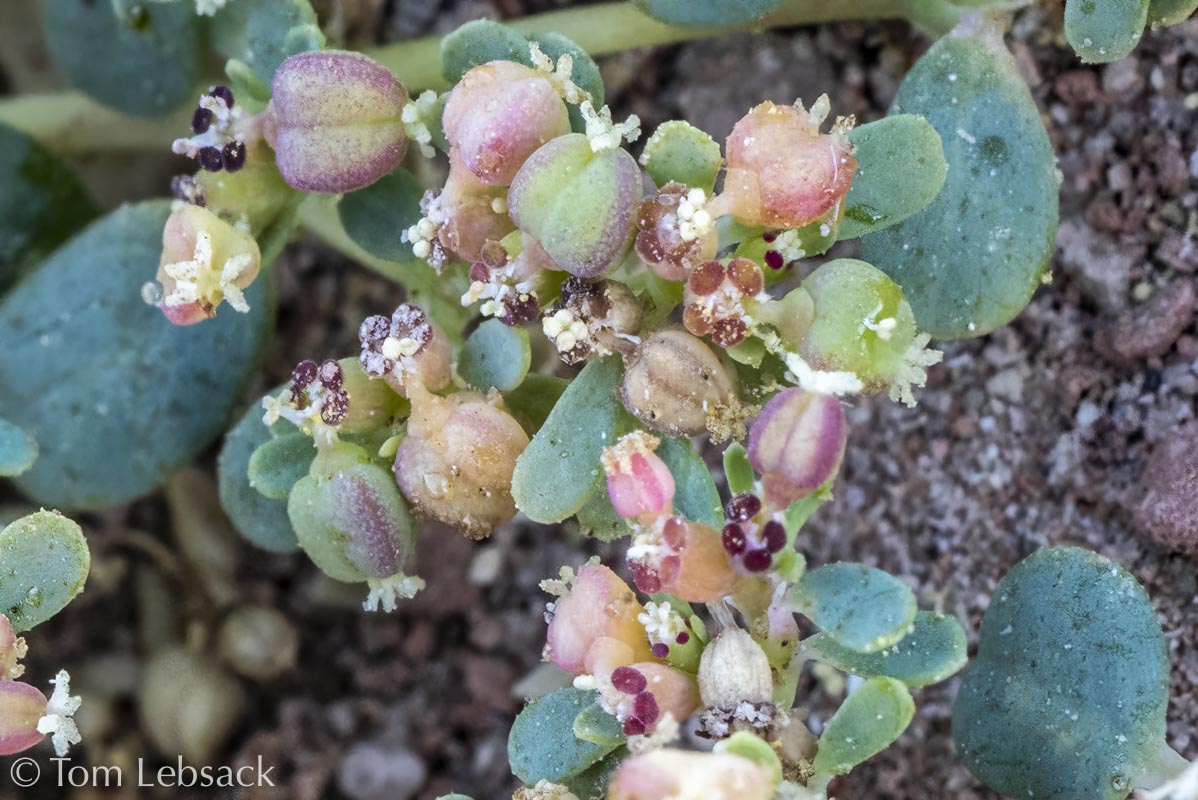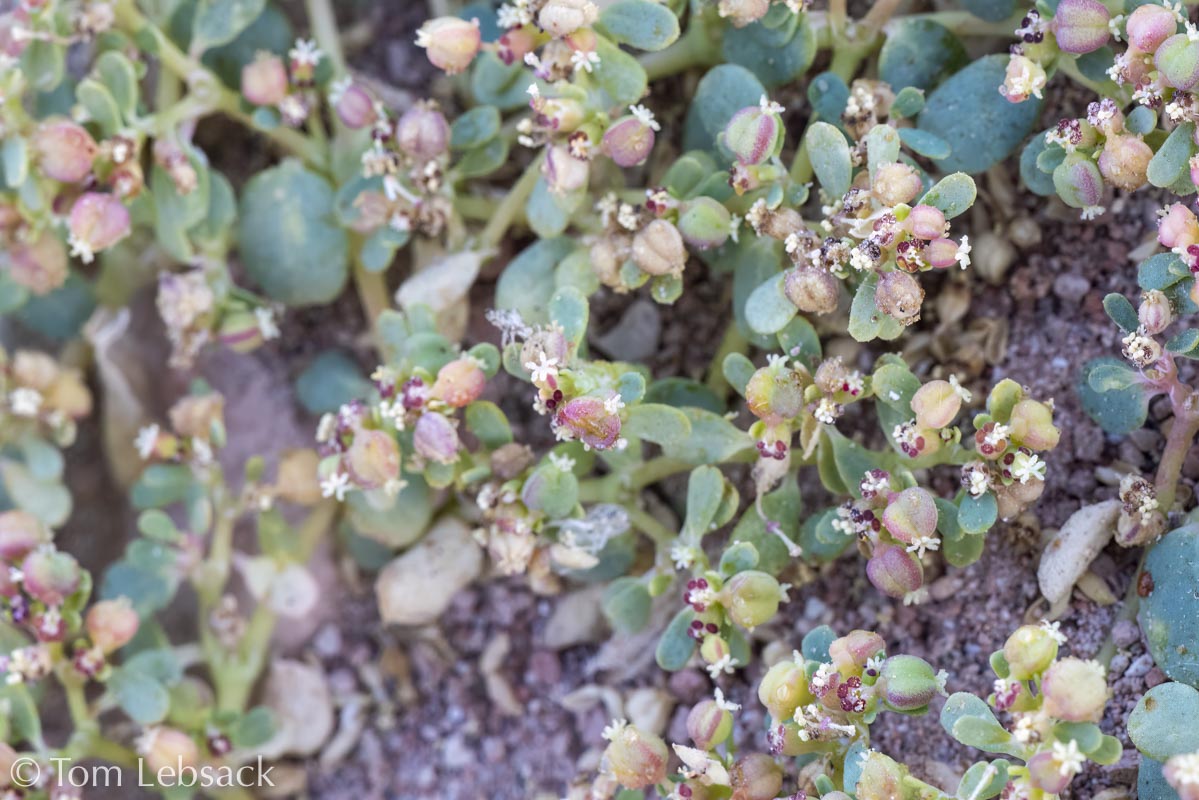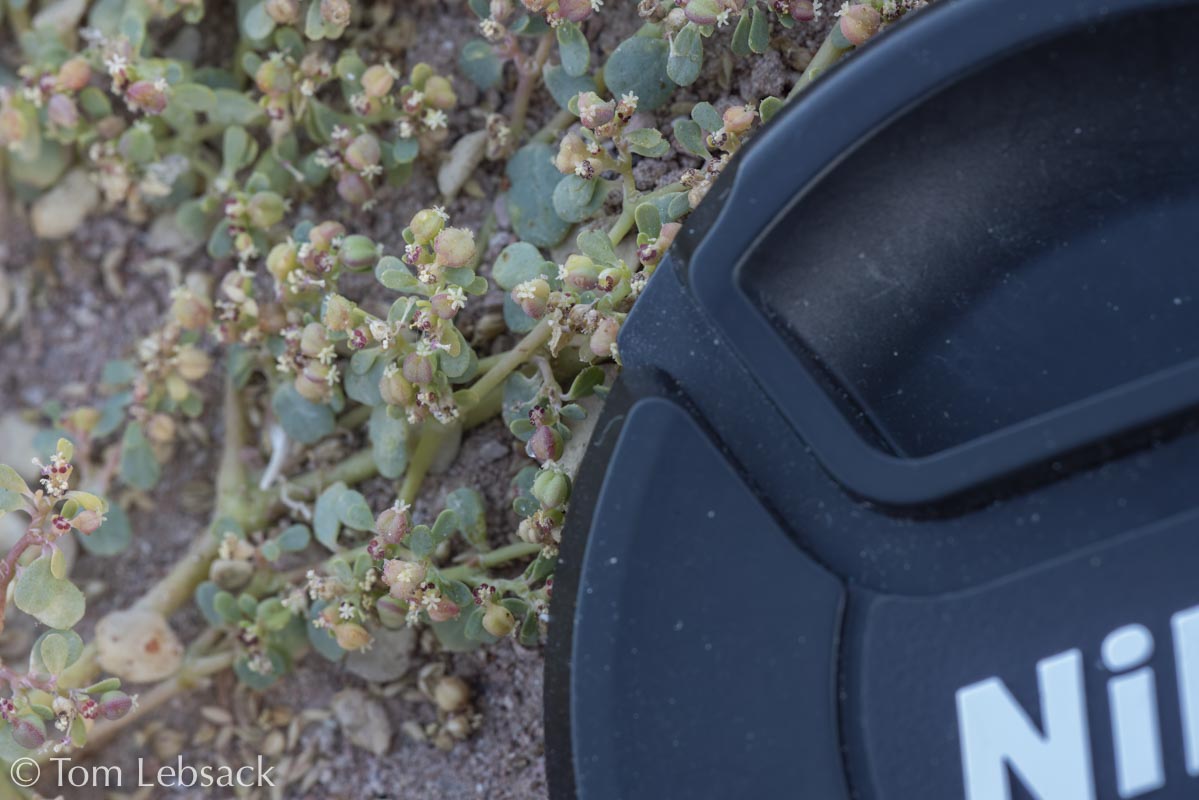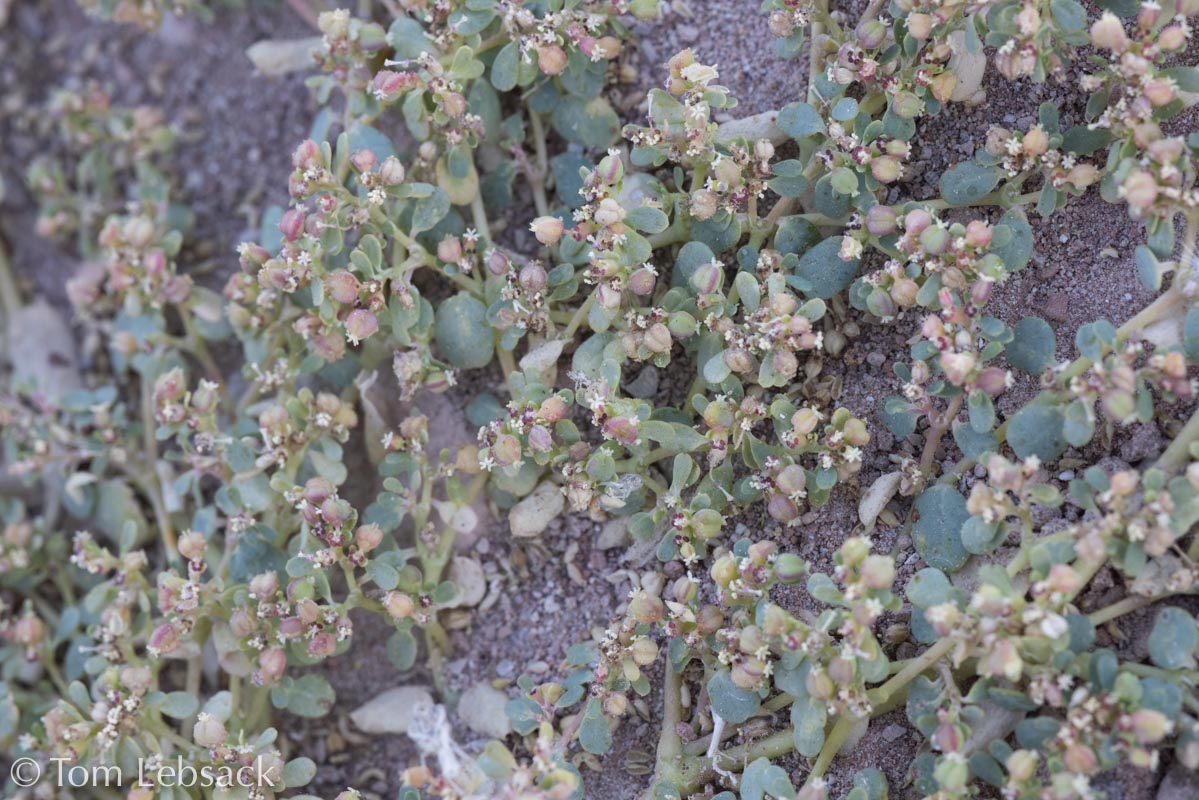Texas Wildbuds
Euphorbia simulans
(Mimicking Sandmat)
| Scientific Name | Euphorbia simulans (Chamaesyce simulans) | USDA PLANTS Symbol | CHSI5 |
| Common Name | Mimicking Sandmat | ITIS Taxonomic Serial No. | 28137 |
| Family | Euphorbiaceae (Spurge) | SEINet Reference |
Click Here |
| Description | Habitat: Clays, sandy, gravelly or rocky soils in desert scrub, mountains, hills, canyons, washes, flats and roadsides; 2000 to 4200 ft.; in the US, found only in Brewster, Presidio and Hudpseth counties of Texas. Plant: Usually prostrate, mat-forming annual or short-lived perennial with fleshy, reddish-green, tangled stems 2 to 16 inches long. Leaves: Opposite, orbiculate, oval, to shortly oblong less than 1/8 to 3/16-inch long with rounded tips and on short petioles less than 1/16-inch long; smooth surfaces and entire margins. Inflorescence: Very small (about 1/16-inch long) cyathia at nodes or stem forks which have bell- or top-shaped cups (involucre) surrounded by 4 red to purple nectar glands with no "appendages"; each cyathium with many staminate flowers (stamens and anthers) and one pistillate flower (the ovary) that is smooth or fuzzy with a protruding stigma with 3 styles, each with 2 whitish lobes. Fruit: Smooth, tiny, broadly oval-shaped, ~1/16-inch long and almost as wide. Bloom Period: April to October. References: "Manual of the Vascular Plants of Texas" by Correll and Johnston and Flora of North America. |
BONAP Distribution Map Map Color Key |
Texas Status: Native |
Banner photo of Castilleja indivisa and Lupinus ssp. taken along FM 1323 north of Johnson City, Blanco County
© Tom Lebsack 2025
Every attempt is made to provide accurate, up-to-date, and relevant information, but the completeness or accuracy of any information presented on this website cannot be guaranteed. I use authoritative references to insure high standards of accuracy and review and update the information frequently.



